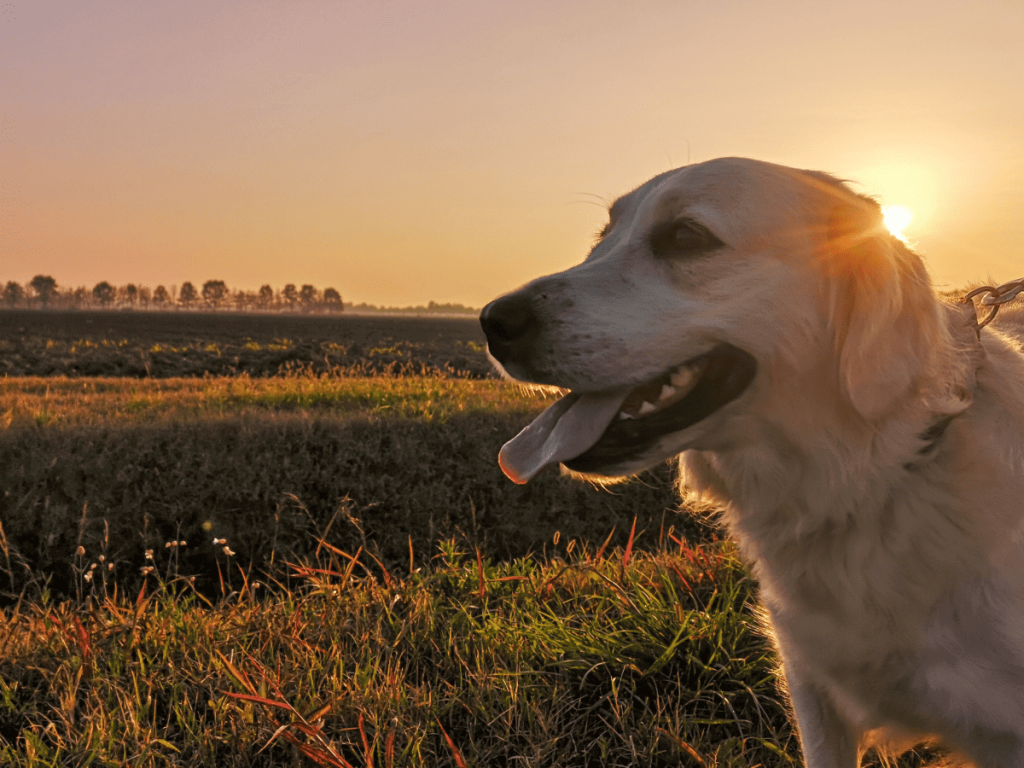Dogs have a long history of domestication and companionship with humans, dating back over 15,000 years. They are frequently mentioned in the Bible, both literally and symbolically. Examining what the Bible says about dogs provides insight into how they were perceived in biblical times and reveals timeless spiritual truths.
The Bible contains over 180 references to dogs, found in both the Old and New Testaments. These passages give glimpses of dogs’ roles in society, such as guarding, herding, hunting, and providing companionship. However, some verses paint dogs in an unfavorable light, using them metaphorically to represent evil, greed, or danger. Contrastingly, a few verses highlight dogs’ loyalty and suggest a place for them in God’s kingdom.
Studying the Bible’s dog references requires understanding the cultural context regarding dogs in ancient Israel and the surrounding regions. Additionally, interpreting symbolic uses of “dog” language sheds light on spiritual lessons for readers today. While the Bible lacks definitive declarations about dogs’ value and place in human society, examining their presence in Scripture provides fascinating insights.
Dogs in the Old Testament

Dogs are sometimes mentioned in negative contexts in the Old Testament. For example, in Deuteronomy 23:18, the Bible warns against bringing “the wages of a dog” into the house of the Lord. This likely refers to male temple prostitutes and their earnings.
In 1 Samuel 17:43, Goliath insults David by calling him a dog. This was meant as a demeaning term, implying David was unclean or of low status.
1 Kings 14:11 and 1 Kings 16:4 prophesy that those who die in the city will be eaten by dogs, seen as a disgraceful end.
Overall, dogs are often used symbolically to represent uncleanness, low status, or exclusion from holy things in the Old Testament. Despite this, dogs still served functional roles such as guarding, herding, and hunting.
Dogs in the New Testament
In the New Testament, Jesus uses dogs in a metaphorical sense to refer to Gentiles. In Matthew 15:21-28, Jesus encounters a Canaanite woman who begs him to heal her demon-possessed daughter. Jesus initially refuses, saying “I was sent only to the lost sheep of Israel.” The woman persists, saying “even the dogs eat the crumbs that fall from their master’s table.” Jesus praises her faith and heals her daughter.
This interaction shows Jesus using “dogs” as a metaphor for Gentiles, implying they are of lower status than Jews. However, the woman’s clever response and Jesus’ healing of her daughter demonstrates that Gentiles too can receive God’s blessings through faith. Jesus praises the woman’s great faith, showing that Gentiles who believe can also be part of God’s kingdom.
Interpreting ‘Dog’ References
In the Bible, dogs are sometimes portrayed negatively as unclean or impure animals. This reflects the cultural context of ancient Israelites, who viewed dogs as scavengers that ate garbage and dead bodies.
There are a few instances where Jesus refers to Gentiles as “dogs.” For example, when a Canaanite woman begs Jesus to heal her daughter, he initially responds “It is not right to take the children’s bread and toss it to the dogs” (Matthew 15:26). Jesus was using a common metaphor that likened Gentiles to wild dogs or scavengers. His initial reluctance reflects prevailing Jewish prejudices against Gentiles. However, Jesus goes on to praise the woman’s faith and heal her daughter, demonstrating that salvation is available to all people regardless of ethnicity.
So while “dog” could be an insult, Jesus used it to challenge the woman’s faith and make a point about extending grace to outsiders. His metaphor reflected language that was common at the time, not his own disdain toward Gentiles. The cultural context is key for understanding these references.
Positive Symbolism of Dogs

Dogs are often portrayed as symbols of loyalty and companionship in the Bible. In Proverbs 12:10, the Bible says “The righteous care for the needs of their animals, but the kindest acts of the wicked are cruel”. This verse encourages humans to treat animals, like dogs, with kindness.
In Psalm 59, David compares his enemies surrounding him to “dogs prowling around a city”. Even though dogs had a negative connotation in this verse, it also shows how dogs stick together in packs and have a bond of loyalty with each other.
There are several verses that mention dogs staying faithfully with their masters. In 1 Kings 14:11, dogs are described eating the body of King Jeroboam after he dies, which was considered a disgrace. However, the passage also notes how the dogs remained loyally with him after death. Overall, dogs are portrayed as loyal companions who stay with their owners.
Guide Dogs in the Bible
Guide dogs are not explicitly mentioned in the Bible, as the formal training of dogs to guide and assist blind people is a relatively modern concept. However, there are passages in the Bible that relate to helping and guiding the blind in general.
In Leviticus 19:14, God commands the Israelites, “You shall not curse the deaf or put a stumbling block before the blind, but you shall fear your God: I am the Lord.” This verse discourages intentionally misleading or harming blind people. Though guide dogs are not referenced, the spirit of this verse promotes assisting and protecting the blind from harm.
There are also several verses that encourage righteous people to help and guide the blind. In Deuteronomy 27:18 it states, “Cursed be anyone who misleads a blind man on the road.” Again, the specific use of guide dogs is not mentioned, but protecting the blind from being led astray is valued.
Isaiah 42:16 declares, “I will lead the blind by ways they have not known, along unfamiliar paths I will guide them; I will turn the darkness into light before them and make the rough places smooth. These are the things I will do; I will not forsake them.” This poetic verse points to God as a guide and source of light for the blind. Though not about guide dogs, it shows God’s compassion for guiding the blind.
Overall, the Bible promotes protecting, guiding, and assisting blind people, which relates to the purpose of guide dogs. The Bible focuses on the importance of helping the blind, more than specifying the methods or tools used to do so. Guide dogs represent a more recent approach to enacting these biblical principles of aiding the blind.
Hunting Dogs
Hunting dogs have a long history of assisting humans in hunting game and retrieving prey. As far back as ancient Egypt, wall paintings depict dogs assisting their masters in hunting birds and gazelles. References to hunting dogs can also be found in the Bible.
In Genesis 27:3, Isaac instructs his son Esau: “Now then, get your equipment—your quiver and bow—and go out to the open country to hunt some wild game for me.” This implies Esau would be using hunting dogs to help track and retrieve the game. Proverbs 12:27 states: “The lazy do not roast any game, but the diligent feed on the riches of the hunt.” Again suggesting the use of dogs to obtain “the riches of the hunt.”
Specific breeds like Greyhounds and Irish Wolfhounds were bred primarily for hunting and could chase down prey over long distances. Their speed, sense of smell, intelligence, and obedience made them ideal partners for the hunt. The Bible highlights these traits in hunting dogs as well, comparing sinners to prey being chased down (Psalm 59:14). Overall, dogs have had an integral role in hunting throughout history, aiding humans as companions and helpers. Their partnership in the hunt is assumed and referenced in several Biblical passages.
Herding Dogs

Herding dogs have been an essential part of farm life for thousands of years, assisting farmers by gathering and driving livestock to desired locations. Scripture contains several references to shepherds using dogs to protect and manage their flocks of sheep and goats.
For example, Job 30:1 states:
“But now they mock me, men younger than I, whose fathers I would have disdained to put with my sheep dogs.”
This verse indicates that dogs were commonly used by shepherds to herd and guard their flocks in Biblical times. Though not mentioned by name, herding dogs likely accompanied the shepherds who visited Jesus at his birth (Luke 2:8-20) and cared for flocks belonging to Old Testament figures like Abraham and Jacob.
On farms today, breeds like the Border Collie, Australian Shepherd, and Australian Cattle Dog continue to excel at gathering, driving, and protecting livestock. Their intelligence, athleticism, and strong work ethic have made them indispensable for farmers and ranchers worldwide. While technology has changed over the centuries, the role of herding dogs remains much the same – partnering with shepherds to manage and safeguard their flocks, just as in Biblical days. Their faithful service echoes the shepherding nature of God himself (Psalm 23:1).
Police and Military Dogs
Dogs have a long history of working alongside humans in law enforcement and military operations. In modern times, dogs are highly valued for their intelligence, loyalty, and keen senses that aid in detecting drugs, explosives, and locating missing persons.
Police K-9 units utilize dogs for tracking criminals, searching for evidence, and apprehending suspects. Some departments conduct swearing-in ceremonies where the police dog places its paw on a Bible or other object as a symbolic gesture. This practice reflects the deep bond and trust between law enforcement officers and their canine partners.
The military also employs dogs in specialized roles such as scouting, sentry, and bomb detection. Their exceptional hearing and sense of smell make them effective at identifying threats and contraband. Military working dogs are even sometimes given ranks, and many have served with distinction in combat zones alongside their human handlers.
Overall, dogs have proven tremendously valuable in police and military operations where their unique abilities complement human skills and enhance security, safety, and service. Their partnership with humans in these fields has saved many lives.
Concluding Thoughts
The Bible contains a range of references to dogs, both positive and negative. While dogs were often symbols of negative qualities like violence and greed, they were also portrayed as loyal companions and helpers.
Key points include:
-
Dogs were typically seen as unclean animals in biblical times, but could sometimes represent positive traits like faithfulness. For instance, some verses use “dog” metaphorically to refer to someone exhibiting shameless behavior (Philippians 3:2), while others highlight their loyalty (Proverbs 26:11).
-
There are a few named dogs in the Bible celebrated for their usefulness, like hunting dogs (Job 30:1) and sheep herding dogs. Dogs also symbolized guidance, as in Isaiah 56:10’s reference to “watchdogs.”
-
Modern breeds specially trained to help people, like guide dogs and police dogs, align with positive symbolic connotations of dogs in the Bible. Their assistance and protection reflect loyalty.
-
While the Bible contains both positive and negative dog symbolism, the presence of working dogs and verses praising canine faithfulness suggests dogs could have a valued place in biblical culture. Their reputation seems more mixed than wholly negative.
Overall, bibliical references indicate dogs had the potential to represent both good and bad qualities. Looking at the full context helps interpret different meanings. The loyalty and usefulness displayed by dogs like guide dogs connects to the more positive symbolism.








